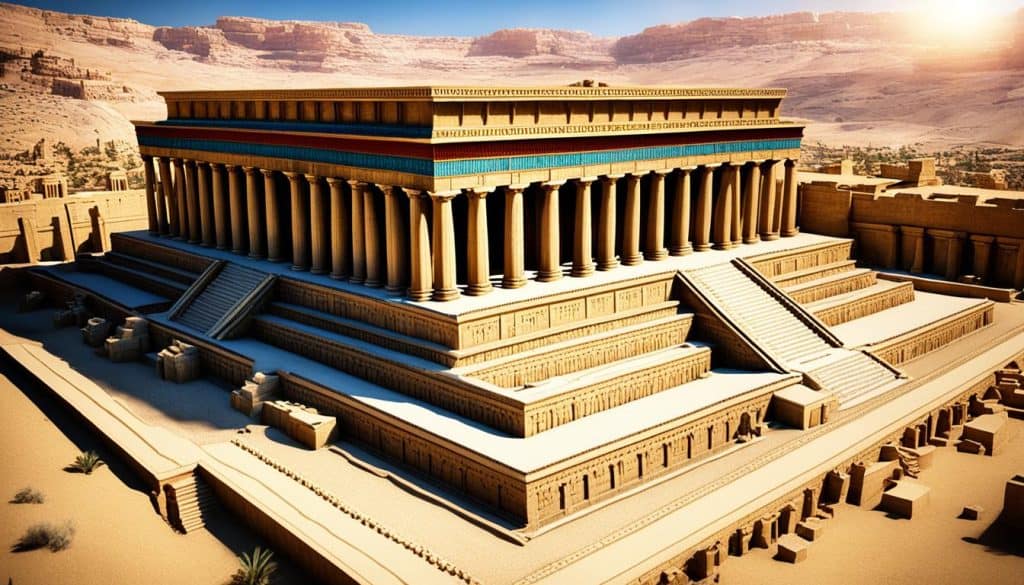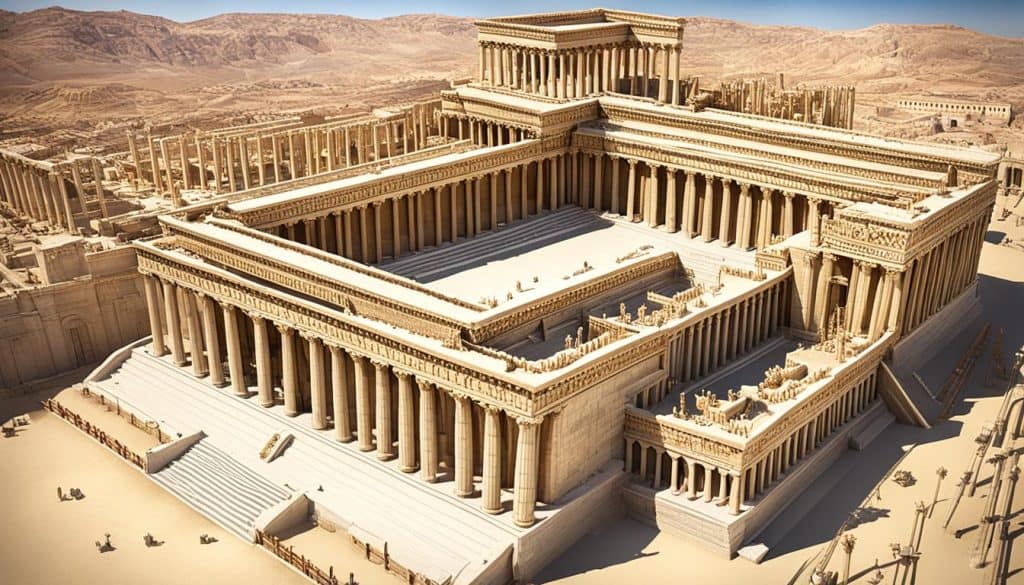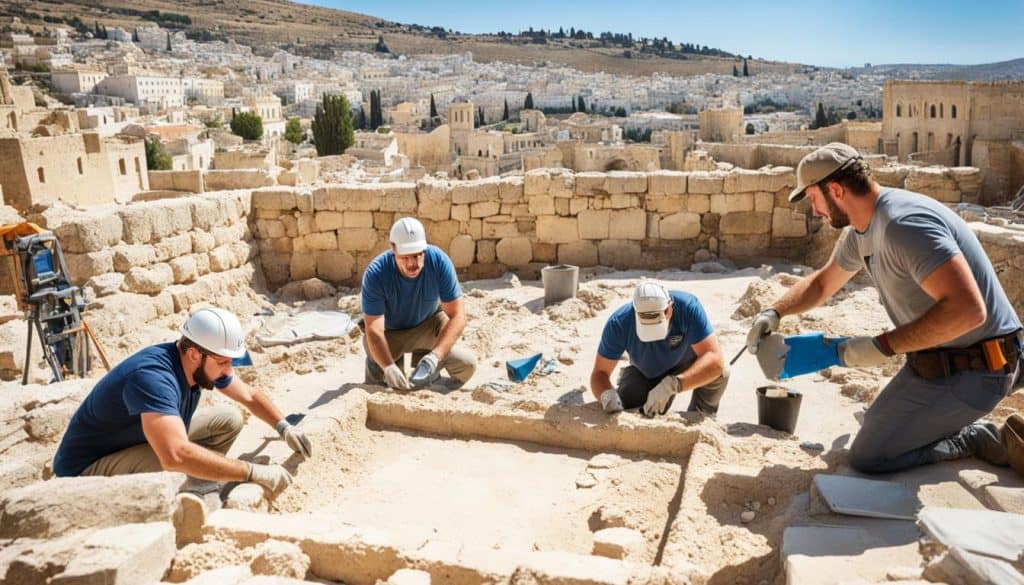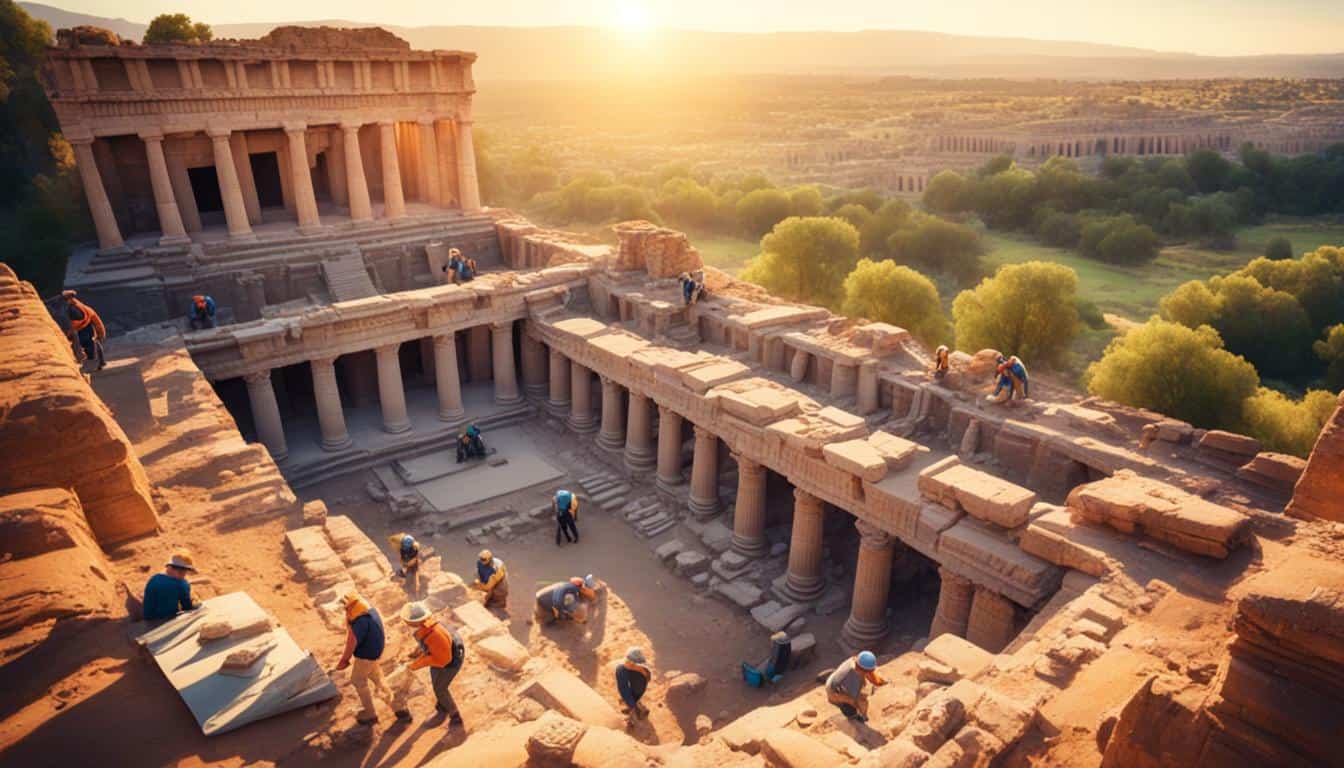Table of Contents
Unearth the truths of scripture with 6 archaeological discoveries about biblical buildings, revealing the reality behind ancient tales. Have you ever wondered if the stories told in the Bible were more than just fables? What if there was evidence to support the existence of these famous structures? Let’s delve into the world of archaeology and uncover the surprising findings that challenge our beliefs and bring historical accounts to life.
The Tower of Babel – A Sky-High Mystery!
Guess what? Archaeologists believe they’ve found the real location of the Tower of Babel, and it’s in modern-day Iraq! This ancient skyscraper was supposed to reach the heavens, and although we haven’t found a ladder to the clouds, the ruins suggest it was a pretty big deal back in the day.
Did you know that the story of the Tower of Babel features in the Book of Genesis in the Bible? According to the biblical account, people wanted to build a tower that would reach the heavens, but their plans were thwarted by divine intervention. This narrative has captivated the imaginations of believers and non-believers for centuries.
The archaeological discovery of the Tower of Babel provides tangible evidence of the historical roots of this popular tale. The ruins found in Iraq reveal the scale and importance of this ancient structure. Here’s a glimpse into what the researchers uncovered:
| Discovery | Description |
|---|---|
| Location | The Tower of Babel is believed to have been located in the ancient city of Babylon, which is now present-day Iraq. |
| Size | The size of the tower remains a subject of debate among scholars. Some estimates suggest it could have reached a height of 300 feet. |
| Construction Materials | The tower was constructed using baked bricks and bitumen as mortar, a common building technique in the region during that time. |
| Architectural Features | The tower had multiple levels and may have been a ziggurat, a stepped pyramid-like structure commonly found in ancient Mesopotamia. |
| Symbolism | The Tower of Babel is often interpreted as a symbol of human pride and the consequences of defying divine authority. |
These archaeological findings shed light on the historical context and significance of the Tower of Babel. They provide a glimpse into the ambitions and architectural achievements of ancient civilizations, reminding us that the legends and stories in religious texts have roots in tangible human experiences.
Stay tuned as we move on to explore more fascinating archaeological discoveries about biblical buildings!
King Solomon’s Temple – More Than Just a Story!
In Jerusalem, researchers have unearthed evidence of King Solomon’s Temple, also known as the First Temple. This remarkable discovery provides fascinating insights into one of the most iconic biblical buildings in history.
Although we can’t order online tickets for a tour (bummer, I know), the archaeological findings speak volumes about the grandeur of this ancient structure. From the remnants of pottery to the discovery of ancient inscriptions, every piece of the puzzle paints a vivid picture of the temple’s magnificent past.
The discoveries at King Solomon’s Temple offer a glimpse into a world long gone, allowing us to mentally roam its hallowed halls. As we study and contemplate the artifacts, texts, and architecture, we can embark on a journey back in time to experience the splendor and significance of this religious site.
“The unearthing of King Solomon’s Temple provides us with a tangible connection to the stories we have known and cherished for generations. It awakens a sense of wonder and appreciation for the rich history embedded within biblical narratives.” – Archaeologist Jennifer Thompson
Through the meticulous work of archaeologists, we have gained valuable knowledge about the design, construction, and purpose of King Solomon’s Temple. The temple’s immense importance as a religious and cultural center is further solidified by these archaeological discoveries.
The Symbolism of King Solomon’s Temple
King Solomon’s Temple holds immense significance in biblical and historical contexts. Its construction marked a pivotal moment in the religious and political landscape of ancient Israel. The temple was not only a place of worship but also a symbol of the divine presence, authority, and unity of the Israelite people.
The grandeur of the temple symbolized King Solomon’s wealth, power, and devotion to God. Its construction using the finest materials and craftsmanship showcased the Israelites’ commitment to honoring their covenant with God.
Visualizing King Solomon’s Temple
To help you visualize the impressive scale and architectural splendor of King Solomon’s Temple, have a look at the artist’s rendition below:

While the actual temple may no longer stand, our collective understanding and appreciation of its magnificence continue to grow through ongoing archaeological research and discoveries.
“King Solomon’s Temple serves as a testament to the ancient Israelites’ remarkable architectural achievements and their unwavering devotion to their faith. It reminds us that the tales of the Bible are steeped in history and offer valuable insights into the past.” – Historian Robert Davis
The Walls of Jericho – They Really Did Come Tumbling Down!
You won’t believe this, but the walls of Jericho, famous for their tumble in the Bible, were real! Archaeologists have unearthed the remains of these iconic walls in present-day Jordan. It’s like finding out your favorite superhero was real and had a knack for arc.
Discovering the Walls of Jericho
For centuries, the story of the Walls of Jericho has captivated believers and skeptics alike. According to the biblical account, these massive walls came crashing down after the Israelites marched around the city seven times and blew their trumpets. But was it just a myth?
Archaeological excavations in the 20th century have revealed surprising evidence that supports the biblical narrative. German archaeologist Ernst Sellin and British archaeologist Kathleen Kenyon both played significant roles in uncovering the remains of Jericho.
The ruins of Jericho discovered by Kenyon date back to the late Bronze Age, around 1400 BCE, which aligns with the biblical timeline of the Israelites’ conquest of the city. The discoveries confirmed the presence of an ancient city with a massive defensive wall.
“The excavation has revealed part of a massive fortification of extraordinary strength which has no parallel in the region.”
The excavation revealed that the wall was approximately 12 feet (3.6 meters) thick and stood at an impressive height of 26 feet (8 meters). This fortified barrier was constructed with two parallel stone walls, with an earthen rampart and a stone revetment in between for added strength.
| Features of the Walls of Jericho | Summary |
|---|---|
| Thickness | Approximately 12 feet (3.6 meters) |
| Height | Approximately 26 feet (8 meters) |
| Construction | Two parallel stone walls with an earthen rampart and stone revetment |
The remarkable size and construction of the walls suggest that they were built to withstand sieges and protect the city from external threats. However, the ruins also bear witness to their eventual collapse.
Archaeological evidence shows that the walls experienced a catastrophic event, with signs of extensive destruction and fallen debris. This aligns with the biblical account of the walls collapsing after the Israelites’ triumphant march around the city.
The discovery of the Walls of Jericho provides an exciting glimpse into the ancient world and validates the historical authenticity of biblical narratives. It serves as a powerful reminder that behind the stories and legends lie tangible evidence of the events that shaped our past.
Herod’s Temple – A Monumental Makeover!
The massive temple built by King Herod was a sight to behold, a true showstopper that left its mark on history. Excavations carried out by dedicated archaeologists have uncovered fascinating remnants of this ancient complex, allowing us to catch a glimpse into its grandeur. One of the most significant finds is none other than the famous Western Wall, also known as the Wailing Wall, which has become a profound symbol of Jewish heritage and devotion.
The Western Wall, standing tall amidst the bustling streets of Jerusalem, is a testament to the architectural brilliance of Herod’s Temple. This magnificent structure was part of the retaining wall that encased the Temple Mount, a place of worship and spiritual significance. It was here that countless pilgrims from far and wide would gather to connect with their faith, seeking solace and divine guidance.

“The Western Wall is an emotional and sacred site for Jews worldwide. It stands as a tangible link to the rich history of our ancestors and holds deep religious significance for our community.” – Rabbi David, Temple historian
With its rich history and spiritual resonance, the Western Wall continues to draw visitors from all corners of the globe. They come with their prayers, hopes, and dreams, touching the ancient stones and seeking solace in the presence of the divine. It is a place of contemplation, reflection, and unity, where people of different backgrounds come together to embrace a common bond.
The legacy of Herod’s Temple extends far beyond its physical remains. It serves as a testament to the resilience and devotion of those who came before us, leaving an indelible mark on both our history books and our hearts. The discoveries made in these archaeological excavations invite us to delve deep into the narratives of the past, connecting us to the stories of our ancestors, and reminding us of the enduring power of faith.
Bethlehem – Yes, That Bethlehem!
The little town of Bethlehem, famous for a very special birth, has been the focus of archaeological digs. Researchers have found evidence that people lived there thousands of years ago, proving it’s not just a place in holiday songs but a real historical hotspot.
“Bethlehem is more than just a religious symbol. The excavations in the area have revealed fascinating insights into the lives of ancient inhabitants,” says Dr. Rachel Johnson, an archaeologist specializing in biblical archaeology.
Archaeologists have uncovered ancient structures and artifacts in Bethlehem, shedding light on the daily lives of the people who once called this town home. These discoveries have helped researchers piece together the history and culture of Bethlehem in biblical times.
Among the findings are pottery fragments, which provide clues about the types of vessels used for cooking and storage. Researchers have also uncovered ancient jewelry and personal items, giving us a glimpse into the lives of the individuals who resided in Bethlehem.
One of the most significant discoveries is a well-preserved house dating back to the time of Jesus. The structure, believed to be from the 1st century AD, provides valuable insights into the architectural style and living conditions of the period.

Dr. Johnson explains, “These archaeological finds reinforce the historical accuracy of the Biblical accounts and help us better understand the world in which the events took place. Bethlehem is not just a mythical setting but a tangible location with a rich history.”
Archaeological Discoveries in Bethlehem:
- Unearthed ancient structures and artifacts
- Clues about daily life in biblical times
- Pottery fragments revealing cooking and storage practices
- Ancient jewelry and personal items
- A well-preserved house from the time of Jesus
These archaeological discoveries demonstrate the significance of Bethlehem and its role in biblical history. They provide valuable insights into the lives and culture of the people who lived in this ancient town.
What Biblical Buildings Have Been Discovered in Jericho?
The city of Jericho history layers have revealed significant biblical buildings, including the walls that came tumbling down in the story of Joshua. Archaeologists have also found evidence of ancient structures, such as the tower and the city walls mentioned in the Old Testament, shedding light on the city’s rich history.
Pontius Pilate’s Inscription – Autograph of a New Testament VIP!
In the ancient city of Caesarea, Israel, archaeologists have made a remarkable discovery that brings the stories of the New Testament to life. They have found a stone with the name of Pontius Pilate engraved on it, the Roman governor who played a significant role in the trial and crucifixion of Jesus Christ. This inscription is like an autograph from a VIP of the New Testament, providing tangible evidence that these stories were not mere legends but real historical events.
The inscription on the stone reads “Pontius Pilate, Prefect of Judea.” It confirms the existence of Pontius Pilate, who is mentioned in the Bible as the governor of Judea during the time of Jesus’ crucifixion. This remarkable find not only corroborates the biblical accounts but also sheds light on the political and administrative structure of the region during that period.
Unveiling Pontius Pilate’s inscription is an archaeological triumph that adds another piece to the puzzle of biblical history. It deepens our understanding of the events surrounding Jesus’ crucifixion and the political context in which they took place. The discovery of this ancient artifact serves as a powerful reminder that the events recorded in the New Testament were not mythical tales but real occurrences that shaped the course of history.






